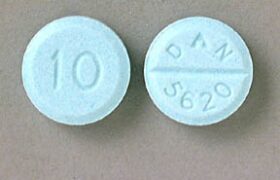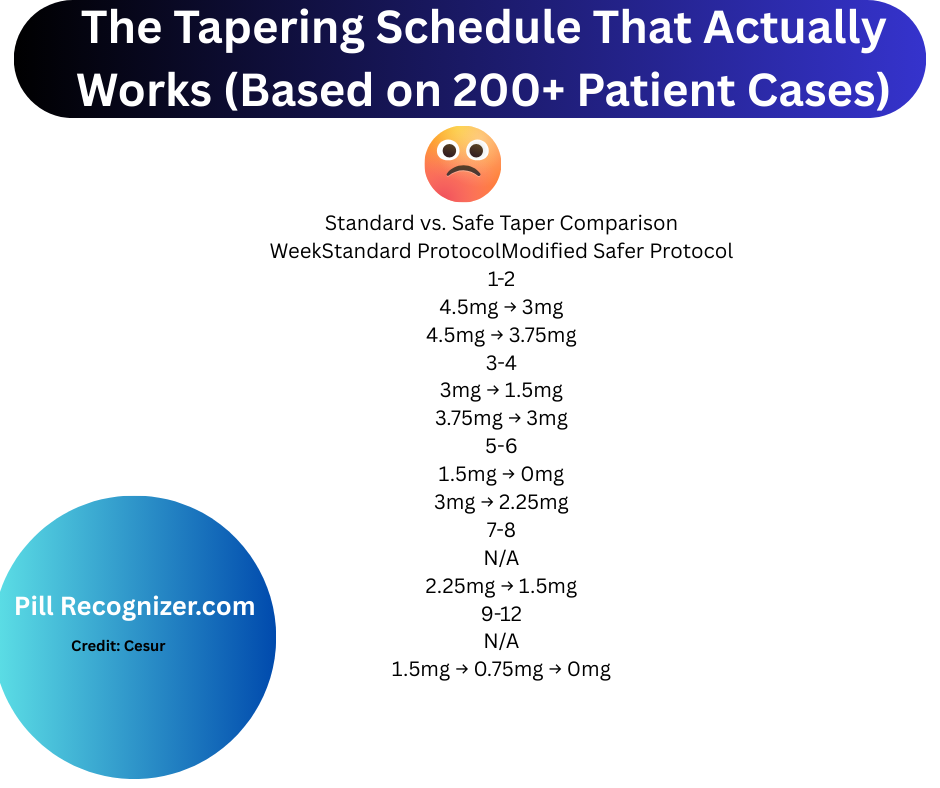DAN 5620 10 Pill Diazepam – Uses, Side Effects, and More
The blue, round pill with the imprint DAN 5620 10 is known to contain 10 milligrams of diazepam. Watson Pharmaceuticals provides it.
Here’s a table summarizing the information for the DAN 5620 10 (Diazepam) pill:
| Attribute | Details |
|---|---|
| Availability | Prescription-only |
| Drug Class | Benzodiazepine anticonvulsants, Benzodiazepines |
| Pregnancy Category | D – Positive evidence of risk |
| Controlled Substance Schedule | Schedule IV (4) – Some potential for abuse |
| Labeler / Supplier | Watson Pharmaceuticals |
This table encapsulates the key characteristics of Diazepam, providing an at-a-glance view of its classification and regulatory status. If you need more details or specific information, feel free to ask!
What is the DAN 5620 10 Pill?
If you’ve ever been prescribed DAN 5620 10, you might have wondered what exactly it is. This small, round, white pill is commonly known as Diazepam 10 mg, a medicine with a well-established relaxing effect. Made by Watson Pharmaceuticals, the pill is immediately recognizable with the numbers “10” on one side and “DAN 5620” on the other. What does it do, though, and is it appropriate for you?
Understanding Diazepam: What is it Used For?
Diazepam belongs to a class of drugs called benzodiazepines, which act on the brain and nerves (central nervous system) to produce a calming effect. It’s commonly prescribed for a variety of conditions, including:
- Anxiety disorders: Diazepam help lessen the signs of panic episodes, social anxiety, and generalized anxiety disorder (GAD).
- Muscle spasms: This drug may help if you have multiple sclerosis or cerebral palsy and are experiencing muscle spasms or stiffness.
- Seizures: Diazepam is sometimes used as part of a treatment plan for controlling seizures.
- Alcohol withdrawal: Alcohol withdrawal symptoms like tremors, agitation, and hallucinations are lessened by it.
Diazepam is a therapy option that is adaptable due to its ability to soothe nerves and lessen overactivity in the brain.
How Does Diazepam Work?
You might be curious about how diazepam works within the body. Diazepam enhances the effects of a neurotransmitter called GABA (gamma-aminobutyric acid), This prevents specific brain functions. Diazepam relieves anxiety, eases tense muscles, and lessens seizure activity by enhancing the relaxing effects of GABA. The body can relax and restore control as a result of this process, which lowers the brain’s hyperactive reactions.
Medical Conditions Treated with Diazepam
Doctors prescribe the DAN 5620 10 pill for a variety of medical conditions, each involving some level of overactivity in the brain or body:
- Generalized Anxiety Disorder (GAD): Helps manage long-term anxiety and panic attacks.
- Muscle Spasms: Relieves muscle tightness and painful spasms, especially in cases like spinal cord injuries.
- Epilepsy and Seizures: Provides emergency relief during seizure episodes.
- Alcohol Withdrawal: lessens alcohol withdrawal symptoms, avoiding potentially fatal side effects including delirium tremens (DTs).
When taking diazepam for these disorders, it’s critical to adhere to your doctor’s instructions in order to maximize benefits and reduce hazards.
Dosage and Administration of Diazepam (DAN 5620 10 Pill)
The standard dosage of diazepam will depend on your condition, age, and response to treatment. Typically, for anxiety, 10 mg is the starting dose, taken 2-4 times per day. For muscle spasms or alcohol withdrawal, doses may vary but often start around 5-10 mg.
Take diazepam precisely as directed at all times. You can take it with or without food, just remember to take it consistently. Steer clear of exceeding the suggested dosage since this raises the possibility of dependency.
Common Side Effects of Diazepam
Similar to any medicine, diazepam may have adverse effects. The majority of consumers only encounter minor side effects, such as:
- Drowsiness: One of the most frequent side effects of diazepam is sleepiness, which is why it’s usually recommended to refrain from using a machine or driving after taking it.
- Dizziness: You may feel lightheaded, especially when standing up suddenly.
- Fatigue: General tiredness or lethargy is a typical response.
- Blurred vision: A small number of patients experience moderate visual issues, which often disappear when the body becomes used to the medicine.
If these side effects persist or worsen, consult your healthcare provider.
Serious Side Effects and Risks
Although diazepam is generally well tolerated, there are some very real hazards to be mindful of. Seek emergency medical assistance if you encounter:
- Breathing difficulties: sluggish or difficult breathing, particularly when used with other drugs that depress the central nervous system, such as alcohol.
- Severe drowsiness or confusion: Feeling extremely disoriented or having trouble staying awake could be signs of a dangerous response.
- Addiction and Dependence: Diazepam abuse, in particular, can result in physical and psychological dependence after prolonged use.
- Withdrawal Symptoms: Seizures, tremors, and mood swings are examples of withdrawal symptoms that can occur when diazepam is stopped suddenly.
Diazepam should be used cautiously, especially if you have a history of substance abuse.
Precautions When Taking Diazepam
Before starting diazepam, let your doctor know if you have any of the following conditions:
- Liver disease
- Kidney disease
- Breathing problems
- History of depression or mental illness
- Pregnancy or breastfeeding
Alcohol and diazepam shouldn’t be used because they can have harmful side effects such as extreme sleepiness, breathing problems, or other impacts.
Diazepam and Addiction: What You Need to Know
There is a considerable chance of dependence while using diazepam for an extended period of time. If taken often over extended periods of time, benzodiazepines, such as diazepam, can lead to both physical and psychological addiction.
Signs of dependency may include:
- Needing higher doses to achieve the same effect
- Craving the medication
- Inability to stop or reduce usage without withdrawal symptoms
It is crucial to speak with a healthcare provider if you or someone you know is experiencing diazepam dependency in order to receive support and a safe tapering schedule.
How to Manage Diazepam Side Effects
To minimize side effects while using diazepam:
- To keep the medication’s levels in your system constant, take it at the same time every day.
- You should avoid mentally demanding activities and stay hydrated until you have a better understanding of how the medicine affects you.
- Contact your doctor if the side effects are severe or don’t go away over time.
For serious issues like breathing problems or severe drowsiness, seek immediate medical attention.
Conclusion: Is Diazepam Right for You?
When taken appropriately, diazepam can be a very successful treatment for seizures, anxiety, and muscle spasms. But it’s important to take it under a doctor’s supervision because of the risk of addiction and severe adverse effects. Constantly discuss the advantages and disadvantages with your physician, and make sure you’re taking diazepam as safely as possible.
Here is a reference list of reliable sources where you can find more information about this medication:
- National Institutes of Health (NIH) – MedlinePlus
- A comprehensive resource that provides information about medications, including uses, side effects, and precautions.
- MedlinePlus: Diazepam


